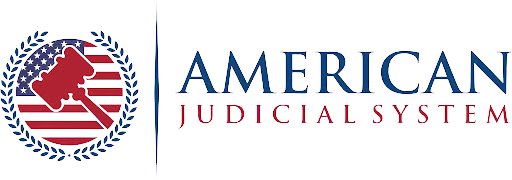Accidents have a way of throwing life off balance. One moment everything is fine, and the next there’s pain and suffering, questions, and a stack of bills that seem to grow by the day. In the middle of all that, the word “settlement” might come up, but most people don’t really know what it means or how the process unfolds. It often feels more complicated than it needs to be.
That’s why a simple explanation can help make things clearer from the start.
What a Settlement Really Is
A personal injury settlement is, at its core, an agreement. Someone was hurt, someone else caused that physical harm, and both sides decide on an amount that makes things right, or at least closer to right. It avoids a courtroom fight. It avoids months (sometimes years) of waiting. And for many people, it avoids even more stress.
Instead of letting a judge decide, both sides negotiate until they land on a lump sum payment they can accept. It’s straightforward in concept, though not always in practice.
Where the Process Begins
A settlement doesn’t appear out of thin air. It starts with the claim, and the claim starts with the accident itself. Whether it’s a car crash, a fall at a store, or an injury at work, the first steps usually look the same: gather information, get medical help, and report what happened.
The details collected early on, like photos, names of witnesses, and medical records, matter more than people realize. Once the insurance company is notified, the claim becomes official, and an adjuster steps in to review everything.
If things already feel overwhelming at this stage, it may be time to get guidance from someone who handles these cases every day. Many people in Tennessee, for example, turn to the best personal injury lawyer in Nashville or nearby when they need steady help navigating the process and protecting their claim from common issues that can lower compensation.
Why Medical Care Needs to Happen Quickly
After an accident, some people try to “wait it out” and hope the pain goes away. It’s understandable, but it often causes problems later. Insurance companies track the timing of medical treatment. If there’s too much delay, they argue the injury didn’t come from the accident.
Getting checked right away does more than protect health; it creates a trail. A doctor’s notes show what was injured, when it happened, and how serious it is. These records end up being some of the strongest pieces of evidence in the entire process.
Sorting Out Who’s Responsible
Before a settlement comes into play, someone has to be found at fault. Sometimes it’s obvious. Other times it’s not. Evidence helps paint the picture: accident reports, security footage, statements, and even the physical damage itself.
There are also cases where blame is shared. In those situations, compensation is adjusted depending on how much each party contributed to the accident. The rules vary depending on the state, but the idea is the same—responsibility affects the final outcome.
How Insurance Companies Approach These Claims
Once the insurance company has the claim, everything becomes more strategic. Adjusters gather information, ask for more documents, and look for weaknesses in the claim. Their job is not to pay the highest amount possible. Their job is to limit how much the company has to give out.
Common tactics include:
- Questioning the severity of the injury
- Suggesting treatment wasn’t necessary
- Pointing to gaps in medical care
- Offering a quick but low settlement
It’s not personal. It’s business. Still, it can feel frustrating, especially when the injured person is trying to recover physically and financially.
How the Value of a Claim Is Built
Every injury affects life in its own way. That’s why settlements aren’t one-size-fits-all. The value is shaped by a combination of factors:
- Medical bills
- Therapy or rehabilitation
- Time missed from work
- Future medical needs
- Pain and discomfort
- Emotional impact
- Long-term limitations
- Damage to personal items
A person with a broken collarbone, for example, may need surgery, weeks off work, and ongoing therapy. Someone with bruising and soreness may recover much faster. The settlement reflects those differences.
It’s not just about the present. A fair settlement also considers how the injury may continue affecting someone months or even years later.
The Demand Letter: The First Real Step Toward Negotiation
After treatment has progressed enough for doctors to understand the long-term outlook, a formal demand is sent to the insurance company. This letter outlines what happened, why the other party is responsible, the nature of the injuries, and the total amount being requested.
It’s the moment the claim becomes more serious. The insurance company now sees the full picture and must decide how to respond.
Negotiations: The Back-and-Forth That Shapes the Outcome
Once the demand letter is received, negotiations begin. Rarely does the insurer agree to the first number. They almost always counter with something lower.
From there, it’s a gradual back-and-forth:
- The insurer offers one number
- The injured party explains why it’s not enough
- More documents may be requested
- Another offer appears
- The discussion continues
Some cases settle quickly. Others drag out. A fair settlement usually lands somewhere between the first offer and the original demand, depending on how strong the evidence is and how severe the injuries are.
What Happens If Negotiations Don’t Work
If both sides reach a standstill, a lawsuit may be filed. This sounds dramatic, but it doesn’t automatically mean a trial will happen. Many lawsuits settle before they ever reach a courtroom.
A lawsuit introduces structure: deadlines, formal evidence exchange, and testimony. Sometimes this pressure pushes both sides closer to a settlement. Trials do happen, but they’re less common than people assume because they’re expensive, stressful, and unpredictable.
When the Settlement Is Finally Reached
Once both sides agree on an amount, the agreement is put in writing. Signing it usually means the case is permanently closed. No more claims or lawsuits related to the same accident.
After the paperwork is signed, the insurance company issues the payment. This money may first go toward medical bills or other outstanding costs, depending on the situation. The remaining amount goes to the injured person.
It doesn’t erase what happened, but it does help rebuild stability.
How Long the Process Takes
The timeline varies. Some claims wrap up in a few months. Others take a year or more. The speed depends on:
- The type of injury
- How long treatment lasts
- How clear fault is
- How the insurance company behaves
- Whether a lawsuit becomes necessary
A slow process isn’t always a sign of trouble. Sometimes it simply means the full impact of the injury is still unfolding.
Why Settlements Matter
A fair settlement does more than cover bills. It brings security at a time when life feels uncertain. Medical expenses, lost wages, legal fees, and recovery costs can pile up quickly. Compensation helps restore balance and gives injured individuals a chance to move forward without carrying the financial weight of an accident they didn’t cause.
Conclusion
A personal injury settlement may look complicated from the outside, but it follows a series of steps that make sense once broken down. It starts with the accident and ends with an agreement designed to make things right. Along the way, evidence, medical care, negotiations, and patience all play a role. A fair settlement doesn’t change what happened, but it helps someone regain stability and rebuild after an unexpected setback. With a clearer understanding of the process, the path from claim to compensation becomes far easier to navigate.









